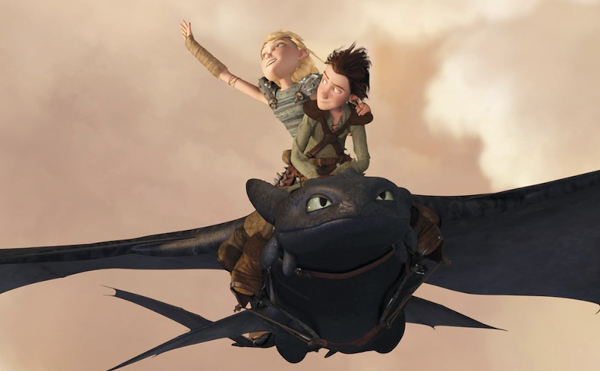It was 1975, and my third-grade classroom was celebrating “world cultures week” at Edison Elementary School in Eugene, Oregon. We snacked on regionally appropriate foods and watched our classmates demonstrate their “traditional native costumes.” The Pacific Northwest is hardly a bastion of ethnic diversity, so most of the world cultures were white. Throughout the week, we snacked on mostly European fare such as breads, cheeses, and a green noodle dish that an Italian-American student explained was called “pesto pasta.”
In retrospect, given my total alienation from the pleated, crew-cut climate that dominated the campus, the teachers should have invited me to demonstrate “Hippie culture” to my classmates. I could have worn a tie-dyed T-shirt, circulated peanut-butter balls and carob-chip cookies, and read from my favorite issue of the Fabulous Furry Freak Brothers.
But such an invitation never materialized. Instead, we gathered to learn about “Oriental Culture.” No plural. There was only one Asian American in our class, and she was from Japan. At first, her presentation was a bit of a let-down because she didn’t have any food to fall back on. In an era when children’s taste buds were fully dominated by Wonder Bread, Oscar Mayer, and Dolly Madison, sushi was viewed as the culinary equivalent of eating grubs and beetles.
She unduly impressed the class with her bento box, but this prompted an intense debate about why anyone would want to eat their lunch in a container that lacked pictures of Superfriends and The Bionic Woman. But then, like Gandalf showing the ring of power to Frodo for the very first time, she proudly displayed a series of office supplies emblazoned with the picture of a mouthless cat. “This is a pencil case,” she said. “This is stationery. This is a my Hello Kitty eraser. I love her.”
And this is when I heard the sound for the first time. The timber and pitch of each person was slightly different, but the room pulsated with the feeling of an almost unanimous emotion. Almost every female in the classroom — and some of the boys (ahem) — half-moaned and half-sighed in unison. It was the same sound that people make when they see penguins, babies, puppies, kittens, and pandas. You’ve heard this sound, too. We all have. It was the sound of “cute.”
Researchers tell us that there is something approaching a scientific consensus as far as the ingredients of cuteness are concerned. Cute icons are childlike, soft, and they need to be taken care of. They tap into the nurturing instincts of all human beings. It helps if they have bright eyes, a round face, floppy limbs, and round ears. Hello Kitty meets many of these criteria. The first Japanese icon to dominate global popular culture, she demonstrated the power of the cuteness design aesthetic. From Doraemon and Mario to Pikachu and PacMan, a steady stream of Japanese characters followed in her paw-steps.
Today, cuteness is one of Japan’s most well-known cultural exports. In Thailand, video games with realistic graphics — the Oblivions and Lineages of the world — are losing ground to casual games such as PangYa, Yulgang, and Maple Story. Although the gaming companies are promoting this style because they believe it is a good way of enticing female gamers to participate in virtual worlds, cuteness clearly cuts across genders.
So what does the popularity of cute games signify? Some argue that the cuteness aesthetic is dangerous and infantilizing because it encourages players to identify with needy and vulnerable icons. Others argue that it is a positive trend because it taps into fundamentally positive human emotions.
But I think something else is going on here. In the years that followed “world cultures” day, it was difficult to reconcile Hello Kitty’s benevolent aura with images of Japanese culture found on American television sets and movie theaters. Portrayed alternately as either camera-toting buffoons or inscrutable villains, Japanese citizens were an easy target for American frustrations.
In order to present Japanese people as stagnant and conformist, they were always lumped into the monolithic term “the Japanese.” It was as if each individual Japanese citizen was a sliver of a gigantic Transformer-like robot that would pulverize the West into economic submission. Western pundits characterized Japanese workers as uncreative drones who were only good at cheap manufacturing. “They might take away some of our physical labor jobs,” we were assured, “but they can never take away America’s brainpower and old-fashioned know-how.”
In Ridley Scott’s abysmal film Black Rain (1989), even the villains were forced to acknowledge America’s creative dominance. “Now music and movies are all America is good for! We make the machines, we build the future, and we won the peace!” If Hello Kitty is the mother of cuteness, Maple Story and PangYa are her children. The popularity of the Japanese cute aesthetic demonstrates that those “robotic conformists” might have been able to dream up some powerful and creative ideas after all.
Cute makes us feel good. It appeals to our empathetic, nurturing instincts. I will always love the sound of people squealing appreciatively when confronted with something that taps into their best instincts. Yet the global popularity of Japan’s “cute aesthetic” is a reminder that no single nation can claim to have a monopoly on ingenuity and creativ
















